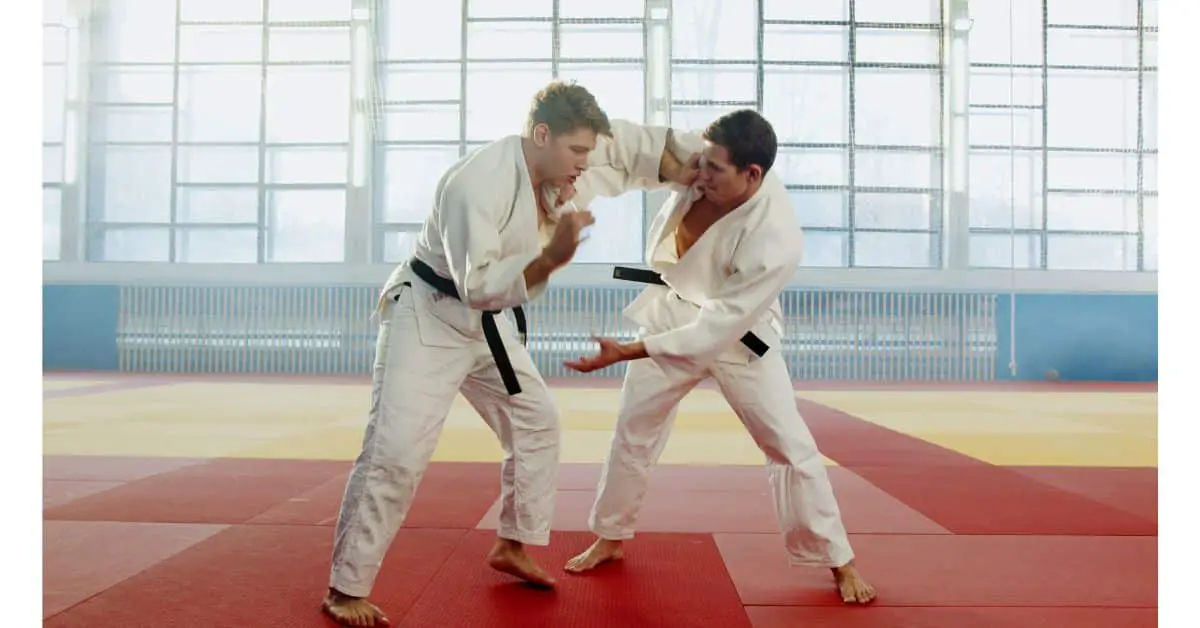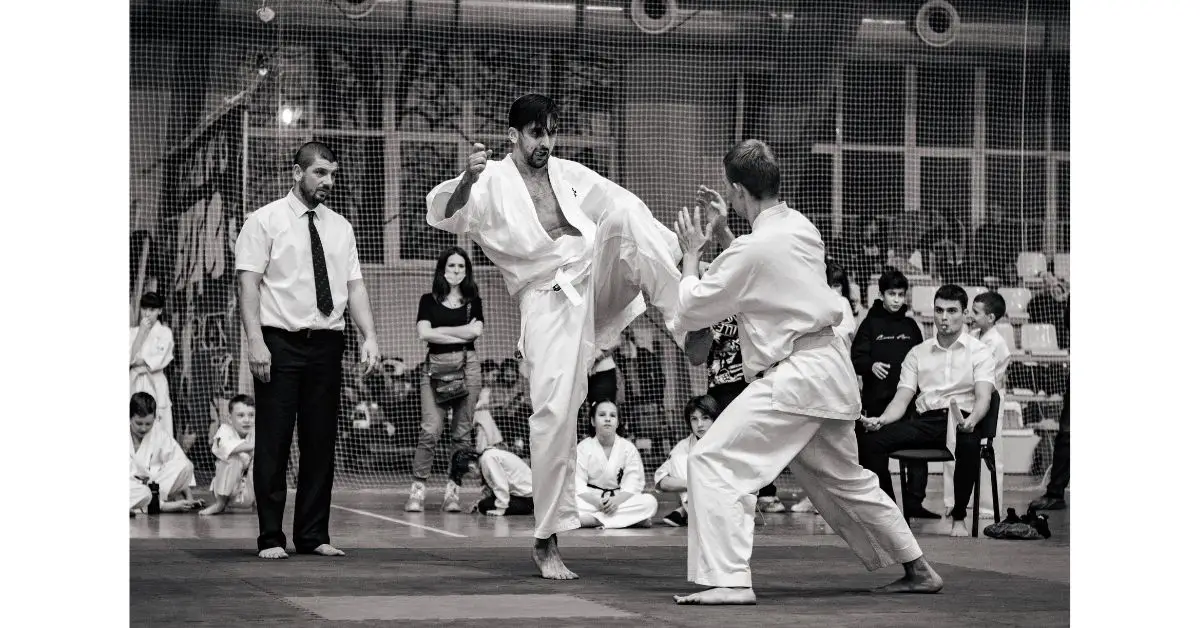Karate is a sport that can be practiced by people of all ages and that promotes both mental and physical power. The traditional karate clothing that is worn during practice and in competitions is known as the karate Gi and a colored belt to signify their ability level in the sport.
The primary illegal techniques in karate include anything immoral, such as joint kicks and even eye gouges. However, the more traditional, raw styles of karate allow the use of such illegal movements, as they’re focused toward self-defense. Still, most modern styles ban the use of such movements.
Karate can be performed in a variety of contexts, including as an art form, as a self-defense technique, and in combat sports and there are rules and guidelines to it of which some are considered illegal.
The rules of karate made by the WKF are legal rules in karate combat or tournaments, and each athlete and official is required to comprehend the complete set of rules and guidelines of karate. Additionally, they have to follow them regardless of the competition type.

The traditional karate combat techniques include aggressive striking, the usage of throws, sweeps, takedowns, and some limited ground fighting.
Effective karate combat is described as an aggressive assault using legal strikes and takedowns that have a significant impact on the adversary. In karate competition, several rules are prohibited in training or actual competition and these are illegal things in karate.
Especially when in general when the technique is deemed excessively risky as you’re not allowed to kill your opponent. You can demonstrate the strike, throw, lock, etc. during practice, or if your skill level is high enough to control it, you can practice it under the guidance of a skilled instructor without actually using it in a fight.
In real life’s actual self-defense, there are no rules in karate. Only the rules you establish for yourself exist, though one must be careful. There are legal techniques when a fighter is grounded and while the fighter is standing. Legal techniques while standing include;
- All punching and hand hitting must be done with a closed fist directed at the front and sides of the face as well as the upper part of the body. Ridge-hand blows are also permitted.
- The fighters must direct their kicking motions at the front and sides of the head, as well as the upper body. Kicks that are administered to the legs below the knees exclusively, such as roundhouse or hooking kicks, not linear or thrusting.
- Tosses, reaps, and sweeps other than those listed under everything illegal in karate.
Legal techniques used while one fighter is grounded include;
- The standing fighter may only use legal hand strikes, and they don’t include the hammer fist and ridge-hand strikes.
- The fighter who is on the ground may engage in any legal strikes including kicks as per stand-up rules.
Everything illegal in Karate
As already established in karate competitions there are rules and guidelines which must be followed or else the competitor risks being disqualified from the competition, here’s a rundown of everything illegal in karate competition.
Illegal techniques in karate include:
- Any type of eye attack takedowns on a hard surface floor, ground fighting on a hard surface.
- Any stomps or kicks to the head of a downed competitor, slapping, grabbing for longer than one second. Uncontrolled blind techniques, any uncontrolled throws, takedowns, or sweeps.
- Any other unsafe sport karate techniques that are uncontrolled and deadly, like hitting or using the fingers or an open hand on any target when a combatant is down.
- Any form of striking or squeezing of the throat, the back of the head, or the spine.
- Attacking a grounded opponent by kicking, walking on, stomping, jumping on, or flinging oneself on them.
- Any type of groin assault. Grasping the head of the opponent with both hands, or keeping it with one hand while striking with the other.
- Purposely throwing or spitting an adversary on their head, neck, or outside the fighting area.
- Timidity or passivity, including, but not limited to, avoiding physical contact with an opponent.
- Neglecting to use authorized methods, dropping the mouthpiece willfully or repeatedly, or fabricating an injury. Holding an opponent’s mitts.
- Attacking a competitor after the bell has rung to end the round, on or during the break, when the competitor is in the referee’s care.
- Blatantly disobeying the referee’s instructions or any corner interference.
These are all illegal things to do in a karate competition or karate sport in general. However, in the case of using karate for self-defense in real life, before using extreme force, it is preferable to try to defuse and neutralize the threat.
What’s legal in Karate?
Karate isn’t focused on putting the opponent out or striking them hard, unlike practically every other martial art. The World Karate Federation has instead created and regulated a point scoring system.
There are variations where full contact is permitted, and the point system is very different, but the WKF oversees the most significant contests. As a result, when it comes to Karate as a sport, the rule set is regarded as the supreme authority.
- The only legal method to use karate or any kind of martial arts is for its purpose—not to intentionally harm someone, but to defend oneself. Of course, aside from practicing it on your own, with a sparring partner, or in a competition.
- Always use the appropriate amount of force to defend yourself or others when using karate as self-defense in real life.
- In karate competitions, there are specific legal target areas, the whole head, face, ribs, chest, belly, collarbone, abdomen, side, and back are all considered legal target areas.
- It is legal for karate matches to take place on a matted square of 8m × 8m with an additional 1m on all sides, which is called the safety area.
- All competitors fight within the WKF rules and guidelines, while being respectful and using what they’ve learned wisely in the karate competitions.
Is punching allowed in Karate?
Some types of punches are allowed in karate. For example, a punch that lands hard on the hogu of the opponent earns one point. The punch must be straight punches with the arm outstretched; jabs, hooks, uppercuts, etc. Punches like these are acceptable, but do not count. Head punches are not permitted.
Punching is allowed in karate because it’s one of the basic fighting techniques it teaches. However, some type of punches are illegal, such as elbow punches. Nonetheless, the basics of offensive karate are built upon punching, and as a result, they’re legal to use freely.
Final words
These are the various legal and illegal things about karate. The goal of karate competitions, tournaments, and combats is to present bouts that both embody the ferocious fighting spirit and the traditional ethics connected to the Bushido Code.
To that end, opponents are awarded for their bravery in aggressively using their talents, and they are punished for their timidity or inactivity, which is shown by refusing to participate or engaging in just counterattacking.
The competitions often seek to feature exciting, dramatic, and fast-paced karate fighting performances.
In real life, when using karate for self-defense to repel an approaching attack, the force must be controlled, necessary, and proportionately deployed, so it doesn’t cause permanent damage as there are no rules to self-defense.
One must stay away from the excessive and disproportionate force that can cause great harm to others, so the purpose of karate is not defeated even in the cause of using it for self-defense.

